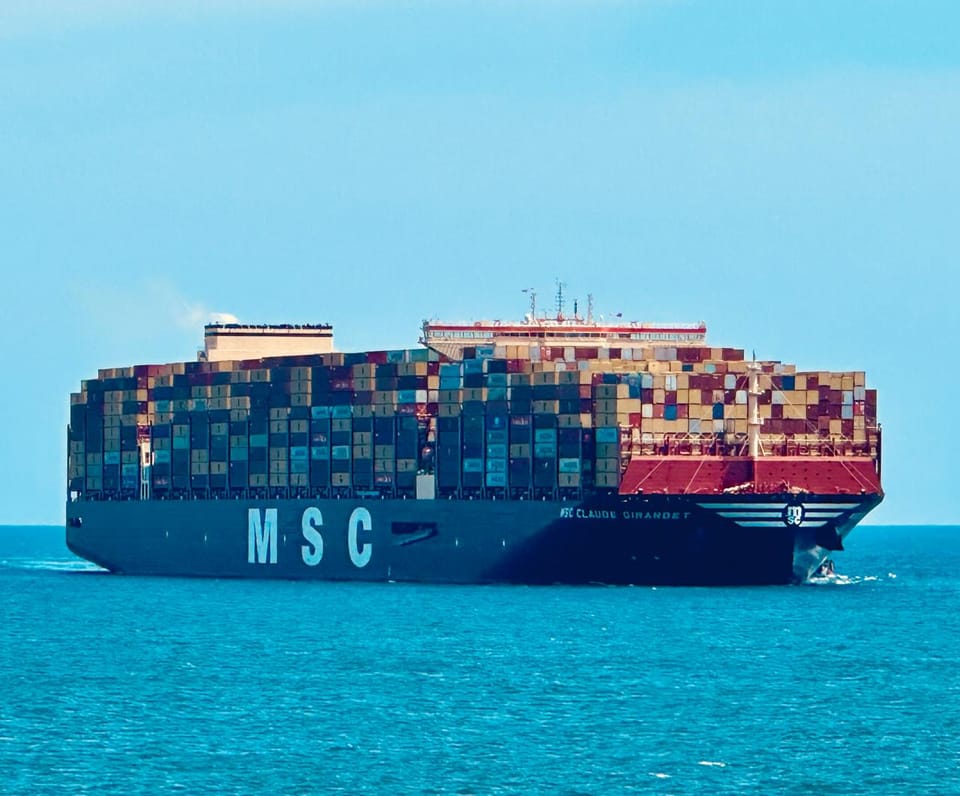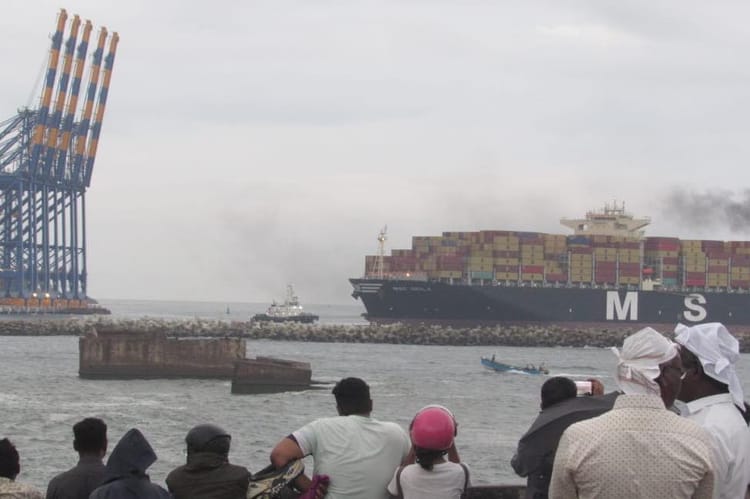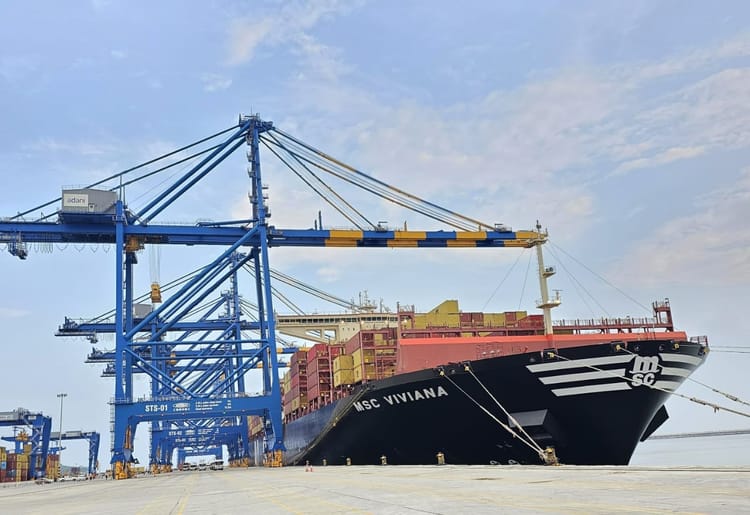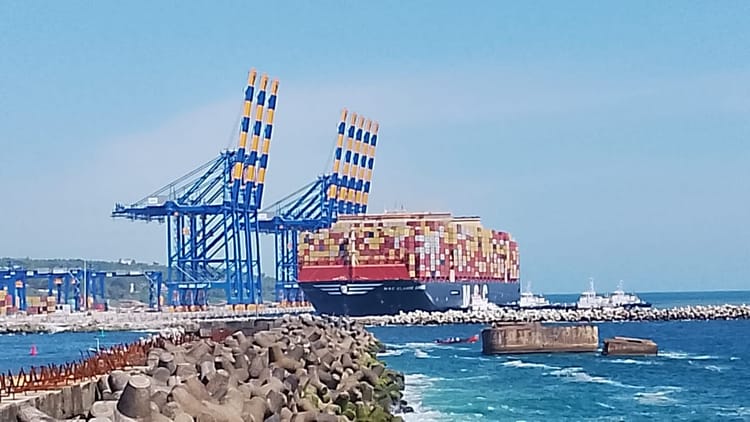MSC Claude Girardet Docks: Thiruvananthapuram Port Shatters South Asian Records!

In the maritime world, six ships arriving at a port in a single month rarely makes headlines. When this feat occurs at a yet to be commissioned port, it becomes extraordinary. Such is the case with Thiruvananthapuram Port in Kerala, India. This nascent harbour has not only welcomed nine ships but of which six vessels belong to Mediterranean Shipping Company (MSC), the world's leading ship operator. The port's notable achievement came with the arrival of MSC Claud Girardet, a large vessel boasting a 24,116 TEU capacity. This marks the first time a ship of this size has docked in South Asia, surpassing the previous regional record held by Evergreen's Ever Ace (24,000 TEU) in Colombo. What's particularly interesting is that Thiruvananthapuram Port has achieved this milestone before its official launch, while Colombo has been operating as a modern port for nearly half a century. This early success suggests that Thiruvananthapuram Port may become a significant player in the region's maritime activities once fully operational.
On July 11, Maersk San Fernando, with a capacity of 8,700 TEU, became the first container ship to dock at the Vizhinjam wharf. This inaugural berthing was followed by two more Maersk vessels, setting a promising trend. At the time of this report, the port has already welcomed nine ships, most of them being large mother vessels.
The rapid attraction of major shipping companies like Maersk and MSC to this fledgling port can be attributed to several factors. Primary among these is the congestion plaguing nearby transshipment hubs such as Singapore and Colombo. The ongoing Red Sea crisis has further disrupted established port operations, forcing many ships to endure long waits in outer anchorages. For these massive vessels, with daily operating costs reaching US$45,000, every day is crucial. The ability to swiftly unload cargo has become paramount, a need that Thiruvananthapuram Port is well-positioned to meet.
This confluence of global shipping challenges has inadvertently become a boon for Thiruvananthapuram Port, allowing it to showcase its capabilities from the outset. Notably, MSC is exploring the possibility of establishing this port as one of their hub locations. The company is actively testing Vizhinjam's potential to serve as a pivotal hub port for South Asia, a development that could significantly alter regional shipping dynamics if successful.
The global reach of Thiruvananthapuram port is evident from the diverse routes of its early visitors. The inaugural vessel, San Fernando, journeyed directly from China's Xiamen port to Colombo via Thiruvananthapuram. Subsequent ships like Kmarin Azur and Navois Tempo facilitated container transport to various Indian ports. MSC's first arrival Deila came from Mumbai's JNPT, continuing to Colombo after servicing regional ports like Kochi and Mundra. The 15,000 TEU Orion made its way from Brazil's Itaguai port, while Kayley linked Singapore and Colombo. Other notable connections include vessels from South Korea's Busan port and Abu Dhabi, demonstrating the port's rapidly expanding international network.
This burgeoning activity signals Thiruvananthapuram port's emergence on the global shipping radar. Its success as a public-private partnership between Government of Kerala and Adani Ports and Special Economic Zone (APSEZ) has sparked a renewed focus on India's Blue Economy strategy. The port's development has highlighted the need for large-scale ports across the country, influencing plans for similar projects in Maharashtra's Wadhwan and Andaman's Galathea.
The significance of such ports extends beyond mere logistics. Many developed nations have leveraged similar infrastructure as catalysts for industrialisation and export growth. For India, Thiruvananthapuram port represents an opportunity to address its substantial export-import imbalance. The government should prioritise port-based industries and related facilities to fully capitalise on this potential. This will mean integrating and streamlining other modes of transportation such as railways, roadways, and inland waterways. Additionally, expanding the suite of courses offered by Government skilling institutions by integrating industry-required skills to meet human resource requirements locally will be crucial, leveraging India's demographic dividend.
Thiruvananthapuram port's role as India's first major transshipment hub cannot be overstated. It offers Indian businesses a logistical advantage, enabling direct export of agricultural and industrial products. This not only ensures faster delivery to end markets but also promises significant reductions in freight costs.
The port's positive impact on the Indian economy is already evident. The rapid turnaround of ships at the port is a testament to its efficiency and strategic importance. Given its semi-automated operations, this is by far the most advanced port in India.
“No other ports in India – including our own highly advanced Mundra – has these technologies, and Vizhinjam will be in a class of its own,” Adani Ports MD Karan Adani
Currently operating with a 400-metre wharf, the port will soon need to expand to 800 metres to accommodate both mother vessels and feeder vessels simultaneously, meeting growing demand.
As operations continue to expand, Thiruvananthapuram's waters are poised to become a vibrant hub for international trade, metaphorically described as "India's maritime stadium for global commerce.
However, it's important to temper expectations with reality. While the port's early success is promising, its long-term impact will depend on continued development, strategic management, and its ability to adapt to the evolving needs of global shipping. The coming years will be crucial in determining whether Thiruvananthapuram port can fully realise its potential as a game-changer for India's maritime trade.
This article © 2024 by Motherport News is licensed under CC BY 4.0



